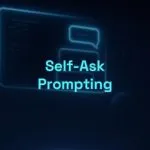TAG Framework: Task, Action, Goal

In many cases, you know exactly what needs to be done, how you want it done, and why. The TAG framework is designed for those situations — it helps you write streamlined, goal-focused prompts that are clear and results-driven.
Perfect for those who want practical outputs without fluff, TAG excels at fast actions, checklists, direct executions, or when the focus is on purposeful results.
What Is the TAG Framework?
The TAG framework is a lean structure that gets straight to the point, ensuring your request is clear and aimed at a specific goal. Its three components work together to create easy-to-apply prompts that deliver what you need without complications. Let’s break down each part and see when it’s the best option.
Framework Components
- Task: Defines what you want the AI to do, such as “create a list” or “plan an event.”
- Action: Details how the task should be executed, like “identify steps” or “use simple examples.”
- Goal: Establishes the end objective, such as “improve organization” or “engage an audience.”
These elements form a concise prompt — ideal for practical, targeted results.
When to Use It?
TAG is ideal when you need focus and simplicity. Use it if:
- You want a quick solution to a specific task.
- You need something structured but without unnecessary detail.
- You’re aiming for a clear goal with AI assistance.
- You want to test ideas or initiate a plan directly tied to a purpose.
For example: “Do [Task] by [Action] to achieve [Goal].”
Practical Examples of TAG in Action
To show how TAG works, here are three examples in real-world contexts. See how it delivers useful, focused results.
Example 1: Social Media Post Ideas
Context: You want to boost your online presence.
Create a list of 5 social media post ideas (Task) by identifying relevant themes for small businesses (Action) to increase audience engagement (Goal).Why it works: The “Task” sets the request, the “Action” specifies the method, and the “Goal” aligns the purpose — leading to practical, focused ideas.
Example 2: Team Meeting Plan
Context: You need to coordinate an efficient team meeting.
Plan a team meeting (Task) by including an agenda with 3 main discussion topics (Action) to align the team on monthly priorities (Goal).Why it works: The “Task” defines the goal, the “Action” gives structure, and the “Goal” ensures the result is useful and relevant.
Example 3: Networking Event Planning
Context: You’re organizing a professional event and need a basic structure.
Organize a networking event for tech professionals (Task). To do so, identify the key elements for success — such as venue, discussion themes, and guest speakers (Action). The goal is to create valuable connection opportunities for participants (Goal).Why it works: Straightforward. The AI knows what to build, how to build it, and what to prioritize in the outcome.
Tips to Get the Most Out of TAG
TAG is simple but can be fine-tuned to perfectly fit your needs. Here are some practical suggestions for customizing it to get the best results.
Customize for Your Objective
- Task: Be specific. “Give suggestions” is broad; “List 4 options” is clear.
- Action: Choose a clear method. “Explain” can be vague; “Break it into steps” is more precise.
- Goal: Set a concrete objective. “Get better” is vague; “Reduce work time by 2 hours” is measurable.
Quick Example:
“Suggest 3 team-building activities (Task) by briefly describing each (Action) to improve collaboration in a remote team (Goal).”
Start Using TAG Today
TAG is your go-to tool for fast, practical, and goal-aligned results with AI. It simplifies the process by focusing on what truly matters: the task, the method, and the outcome. Whether for work, study, or personal projects, this framework helps turn ideas into action effectively.
🎯 Quick Summary:
TAG defines what to do (Task), how to do it (Action), and why (Goal).
🔗 Want to explore more frameworks like this?
Check out the Practical Guide to Prompt Techniques, Frameworks, and Formulas for LLMs, with dozens of detailed and applicable structures for different contexts and goals, plus techniques and prompt engineering tips.
📘 Bonus tip:
Download the free eBook “Prompt Engineering Unveiled”, featuring easy explanations, practical examples, and strategies ranging from basic to advanced to master communication with AI.



